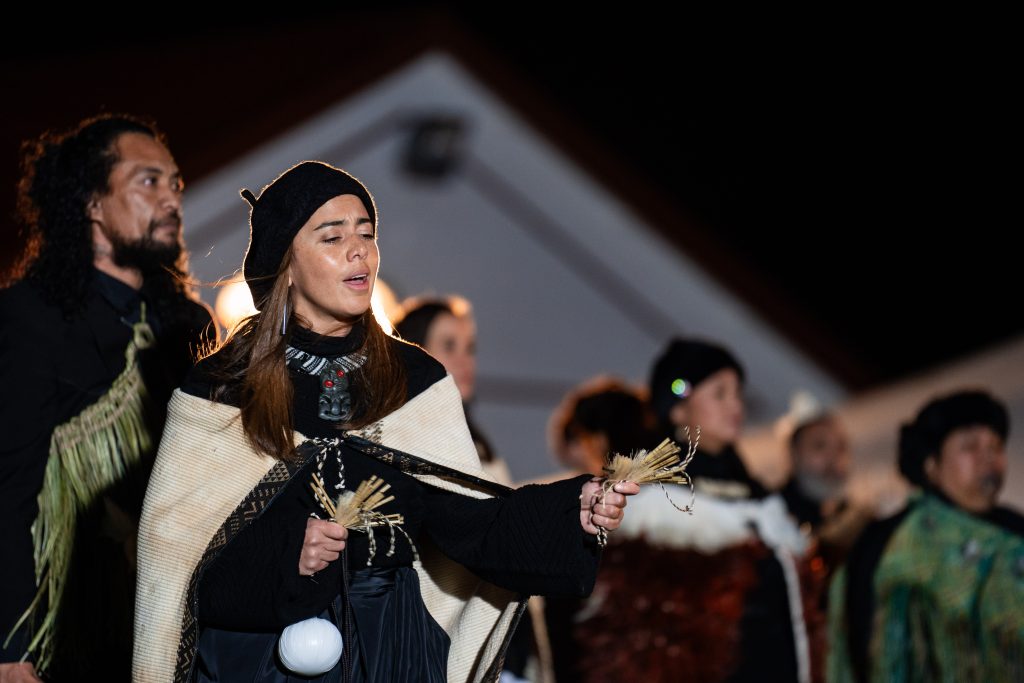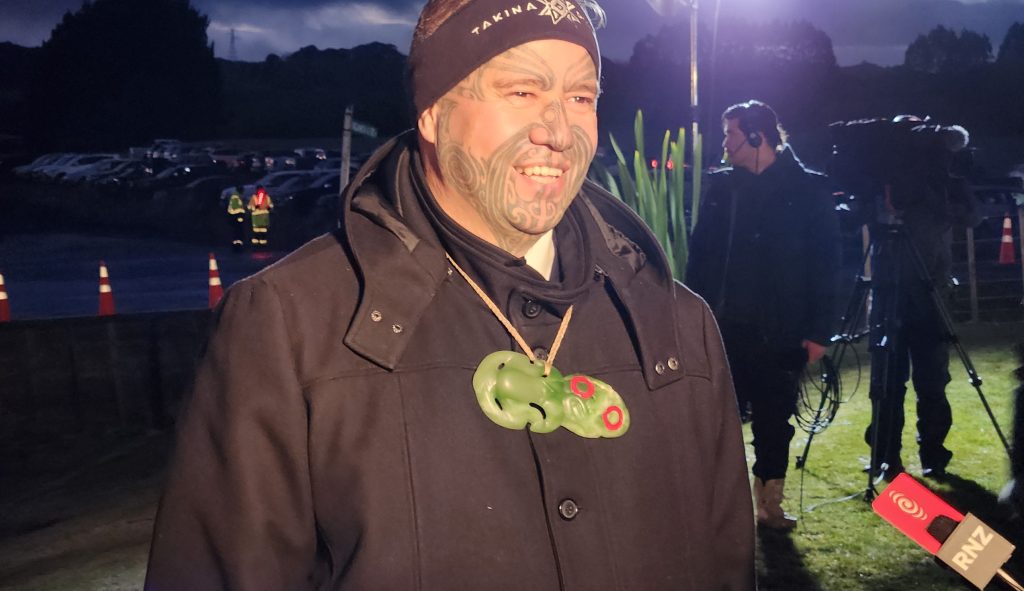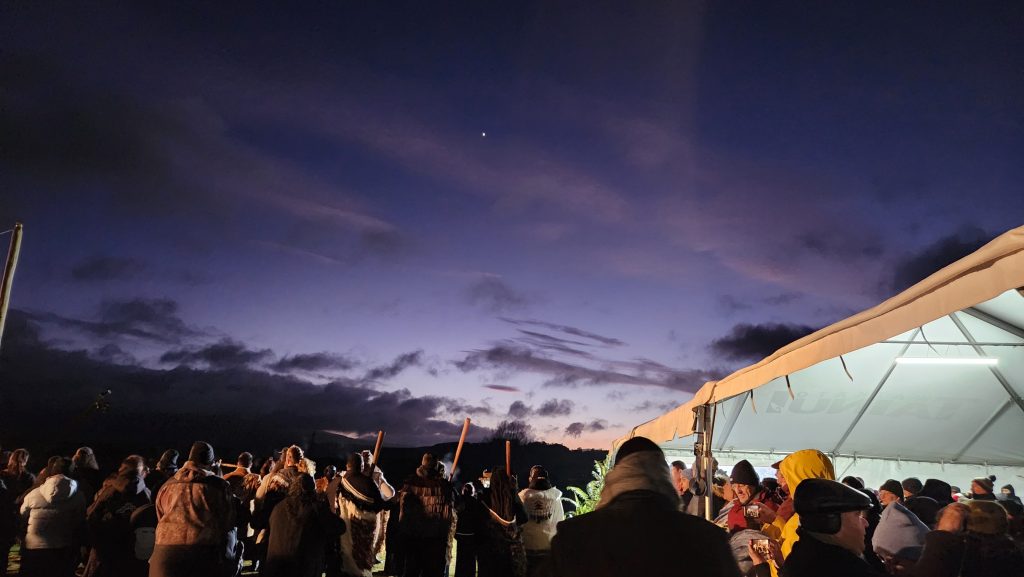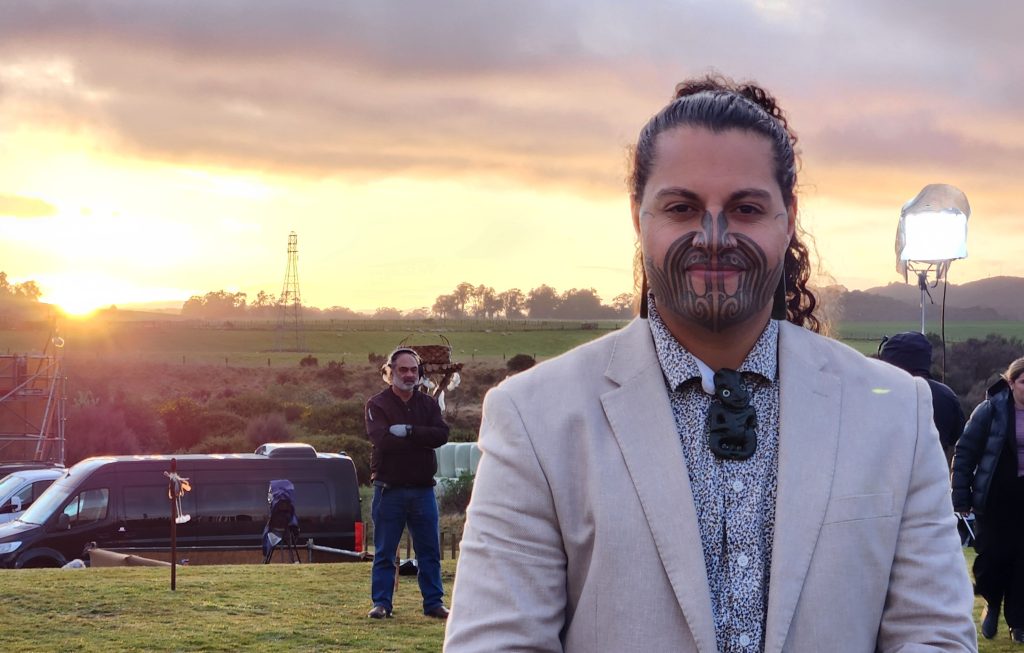
By Moana Ellis, Local Democracy Reporting
One of the brightest stars in the central North Island’s pre-dawn sky led out this year’s Matariki observance day, marking the beginning of the Māori new year.
The theme for the national celebration was Matariki mā Puanga, highlighting the star Puanga, or Rigel.
Puanga was honoured early on Friday morning from the tiny pā of Tirorangi in Karioi, southeast of Ohakune.
A ceremony hosted at the foot of Ruapehu maunga by Ngāti Rangi was attended by around 500 people, including the Māori Queen Te Arikinui Kuīni Nga wai hono i te po and Ministers Paul Goldsmith and Tama Potaka.
The rising of Puanga and the Matariki constellation (Pleiades) are part of an environmental calendar system and usher in the new year for many iwi.
Puanga expert and Ngāti Rangi leader Che Wilson led the Hautapu ceremony. He said for tribes of the west, including Taranaki, Rangitīkei and Whanganui, Puanga gave a better read than Matariki for the seasons ahead and provided crucial weather insights in late autumn and early winter.
“So far it’s looking positive,” Wilson said.

The annual Matariki public holiday was legislated in 2022 and has since been celebrated nationally with a Hautapu ceremony honouring ancient tikanga (customs). The ceremony at Tirorangi pā was the first national Hautapu broadcast from a marae.
The government’s Chief Advisor Mātauranga Matariki, Professor Rangi Mātāmua, said Matariki mā Puanga was chosen as this year’s theme to acknowledge regional and tribal variations in observing the Māori new year.
“The whole notion of Matariki mā Puanga is unity through diversity. Diversity is a strength,” Mātāmua said.
“We shouldn’t look at the things that make us special and unique as things that should be polarised, because when they become polarised people become marginalised.
“For Māori, we’ve never ever looked at other’s unique elements and seen them as an affront to the way we practice. It’s the many flavours and many colours and many ideas that make us who we are as a nation.”

Arts, Culture and Heritage Minister Paul Goldsmith said it was wonderful to have “our own New Zealand indigenous New Year celebration”.
“It’s cold – very cold – but it’s a special time. It’s about the drawing of people together, taking stock of where we are right now and thinking about what we’re going to do next year. This is the fourth national Matariki broadcast but the first time it has been hosted by a marae, and the first year Puanga is the star of national celebrations.”
Māori Development Minister Tama Potaka said the ceremony honoured the deceased and acknowledged the past, present and future.
“They are themes we can all embrace, and the Māori new year gives us time to pause and reflect on what’s going right, what’s going wrong and how we can re-set ourselves for the coming months.”

Iwi member Tāwhiao McMaster saw Hautapu as “our sacred state of re-set.”
“Last year we were quite clear on sending our burdens away so we could come back into this space of doing our work.
“This year, we need to be more aware of how we as a people in te Ao Māori can come together for our collective growth. This year, it’s not just about kotahitanga, it’s about whakapiki te ora – uplifting our lives.”
Tracey-Lee Repia said observing Puanga was part of the push to revitalise cultural identity.
“What’s beautiful is that we’re able to reclaim our own stories and narratives pertaining to being Māori.
“It’s really exciting because we’re learning the things that our tūpuna knew and were just common knowledge.”
Ngāputiputi Akapita attended the ceremony with her daughter, Te Whetu Matarangi Makea.
“Ahakoa ko te tau hou mō tatou te iwi Māori, he wā anō kia hono anō tātou te tāngata, ngā whānau, kia wānanga kia kōrero hei whakanui i tō tātou tuakiritanga,” Akapita said.
[Although it is a new year for us Māori people, it is also a time for us to reconnect as individuals, families, to discuss and celebrate our identity.]Her one wish for the new year was “for my family to be healthy”.

Akapita’s daughter said the morning had been special.
“To present our marae in this way, to host everyone, and for everyone to come together, the whakawhanaungatanga is actually really beautiful.”
Kemp Dryden said the Hautapu was “very grounding”.
“I felt the wairua this morning. I felt our old people here with us as the various rituals and incantations were done. I thought of my grandparents, other kaumātua who are no longer here. It was just special.”
Awa FM – Te Reo Irirangi o Whanganui
For more of our people, our stories, our way, click News or follow us on Facebook.
